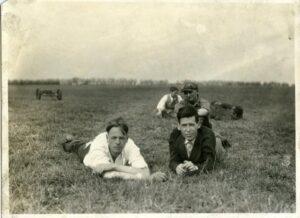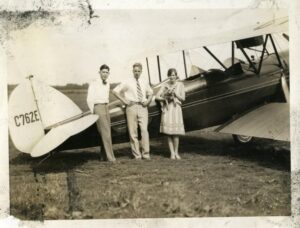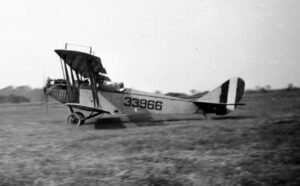Member's Bio
I am the eldest grandson of Ralph B. Eckley who lived his entire life in Monmouth, IL. It is in his honor I serve as a volunteer for the Prairie Aviation Museum.
When I was growing up I
spent a lot of time with my grandfather and lived with him (in his basement) while attending college. “Grandpa” would tell stories of the ‘old days’ and occasionally pull out the picture books from the 1920’s – I only now wish I had made more mental notes.
I came to PAM one day in 2006 to see the IL Aviation Hall of Fame which had been displayed at PAM years prior. It had been removed but I decided to serve as a volunteer and a Board member in his honor. So in September of 2008, I became a PAM Board member at the same meeting as Steve Schmidt. Steve and I soon took leadership roles in PAM and helped through some challenges at that time.
I am still an active member as a Board member and participant in our Wednesday Work Group.
My Story
Back to Grandpa Ralph
Ralph learned to fly from his instructor, Jonathon Livingston. Livingston was raised in Iowa but moved to Monmouth since it was an early aviation center with some buildings and a grass strip.
The airstrip was owned and supported by the city which was a major factor in early aviation. In fact, the Monmouth Municipal Airport is the longest continuously operated airport in the state of Illinois.
Ralph earned his right to fly in 1922 at the age of 21. He did not get a pilot’s license because that did not start until 1926 with the advent of the CAA (predecessor to the FAA).
“Flying Goggles”
In fact, Grandpa (still single at that time) had worn corrective lenses made into his flying goggles (at that time all the airplanes were open cockpits). When the CAA mandated only 20/20 or better vision would be allowed to earn pilot’s licenses, he and 8 of his ‘blind’ flying friends hired a lobbyist to convince the CAA to make a special exception to a group of 9 ‘guinea pigs.’
This group of 9 people who had been flying with corrective lenses would be allowed temporary pilot’s licenses so long as they reported to the CAA yearly – when all 9 continued to fly and after a few years none were killed due to pilot error, the CAA granted pilots with corrective lenses the opportunity to fly recreationally.
Illinois Aviation Hall of Fame
Ralph stayed active in aviation his whole life and was known as an aviation enthusiast who wrote thousands of articles in his newspaper job informing and highlighting the benefits of recreational, business, and military aviation to the public.
In fact, he was invited, as a member of the press, to participate in the inaugural launching in 1961 of America’s first nuclear powered aircraft carrier, The USS Enterprise. He reported on that trip and shared photos with family. This work carried him into the Illinois Aviation Hall of Fame, posthumously, in 1994.
The stories carry on with me. He and his best friend, Roger Haynes, owned one airplane together, a Curtiss JN aka ‘Jenny.’ It was known as the best trainer type plane of its day – the 1920’s primarily. That was the only plane he ever owned as his own.
Airplane Distributors
Ralph, Livingston, and Charley Buchanan together owned Midwest Airlines Corporation based out of Monmouth and later the Chicago suburbs as well. They were essentially an airplane distributor and sold multiple brands of airplanes but primarily Wacos.
In the last half of the 1920’s they sold as many as 96 airplanes in a year, 76 of them Wacos. The Pantagraph newspaper in Bloomington purchased their first of their 4 airplanes from Midwest in the late 1920’s.
The Roaring ’20s and Moonshine
Early aviation must have been wild, especially in those Roaring ‘20’s. People with money wanted to learn to operate a ‘flying machine.’ Many plopped green cash money on the desk of Midwest, about $5000 at that time, and now owned a plane. Many became proficient but some thought flying and drinking alcohol would be a fun way to travel. That did not always end well.
But alcohol and aviation sometimes mixed well for profit. Every Thursday, in the later 1920’s with Prohibition in full effect, a bi plane (they were all bi planes at that time) landed at the Monmouth grass strip. That plane came from Kentucky. It was a very special airplane – it had 2 gas tanks. One held gasoline. The other tank held the fresh Kentucky moonshine.
The airplane operators filled their gas tank with gas, paid cash, and drained a gallon of moonshine from the other tank as “hush money.” The Kentucky plane then headed north to Moline where it appeared they were taking on fuel but were in fact delivering the moonshine to those who desired to imbibe the next weekend.
This story is more than lore – when the City tore down the old hangar buildings years later they found the crock that had held the moonshine – with still a little in there.
Rich Mans Folly and Lindbergh
The early days of aviation had people that enjoyed aviation looking for ways to share their passion with others and help convince the public of the benefits of aviation. The public was naturally skeptical; it was a rich person’s folly. Some people promoted air races to earn publicity. Others focused on safety, traveling speed, and convenience.
People that promoted aviation knew each other well because they carried the torch together. Glenn Curtiss, Livingston, and even Charles Lindbergh were among the people my grandfather knew and called friend. Lindbergh told my grandfather he was going to fly over the Atlantic prior to doing so.
My Grandfather attempted to leverage this info to become a big city newspaperman. He approached the Chicago Tribune to suggest they make him their Aviation Editor to follow the path of Lindbergh to help the Trib’s lead for aviation. They informed Ralph he was nuts. So he
continued his employment with his local newspaper and Lindbergh flew anyway.
 Ralph B Eckley (left) and Charles Lindbergh (right)
Ralph B Eckley (left) and Charles Lindbergh (right) Ralph B Eckley (left), Charles Lindbergh (center), and Anne Morrow Lindbergh (right)
Ralph B Eckley (left), Charles Lindbergh (center), and Anne Morrow Lindbergh (right)
In Summary
Grandpa also took me flying with him. He was a lifelong member of the Monmouth Flying Club and in the 1960’s and 1970’s he would rent the club’s Cessna 150 or 172 and up we went. One time we were directly over Lake Warren when he did a tight turn – my memory is that we turned on a dime – I’m sure that was not correct. Afterward he said, the reason we do these type maneuvers is to remind us that we are in control of the airplane, not the other way around.
I did not grow up as an aviation enthusiast but learned about the colorful industry of aviation from my grandfather. It was one of his passions and some of it rubbed off on me.

 Curtiss Jenny
Curtiss Jenny